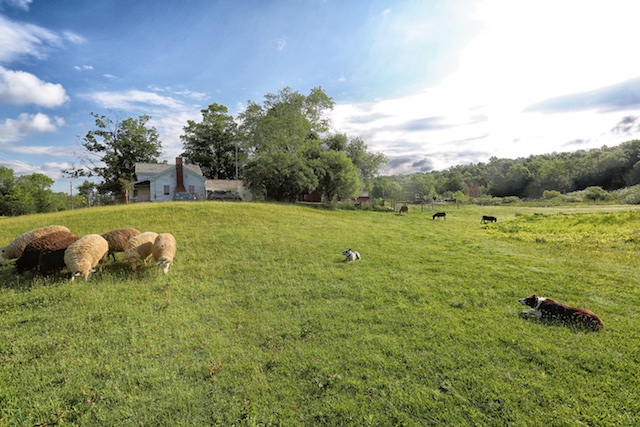
Once in awhile I am compelled to realize just how much I love my farm. I loved the first one too, I love this one as much or more. I love the rhythms and rituals of the farm, l love the feel of it, the life and death of it, the challenge of it. Maria calls me Farmer Jon because one of the things I most love about the farm is managing it, taking the big view of it, anticipating its wants needs and problems.
I am not a farmer, but I have been managing a farm for more than 15 years now, and I have gotten very good at it. I know how much hay to order and when to order it, I do the same with firewood. I keep a sharp eye on our fences to make sure nobody ever walks out of them insofar as it is in my control.
When we got the pony Chloe, I knew we would have to make some dramatic changes to our pastures and rotational grazing schedule to accommodate a Haflinger-Welsh mare, who eats day and night if permitted. This year, I presented Maria with a new plan and we talked about it and agreed to it.
I decided we had to break up our available grazing pasture – about eight acres – into four distinct parts by adding a new fence to the South side of the pasture, sealing off some of our best grass. This would mean the area behind the pole barn would be a paddock, when the animals were not grazing, they would be confined there, nibbling on grass that would eventually just be a worn down stubble.
I called Todd Mason, who came and installed one of his very strong and durable post-and-mesh fences, about five feet high. No horse, donkey or sheep is walking out of those fences, unless lightning strikes or a car crashes through or a big tree falls. We check our fences every day. Todd charged me about $500 for this fence, which runs 500 feet across the pasture from the apple tree to the other side of the marsh.
This leaves us with three grazing ares. The old cow pasture behind Lulu’s crossing, the wide pasture on the north side of the house, which is where I do most of the sheepherding, and this newly-sealed off area, above, on the south side. We opened it up this morning, and the animals rushed out and loved it, fresh green grass three to four inches tall. Two weeks ago, it was worn down and in danger of being barren.
We graze on each pasture for two or three days, then rotate. We let the animals in for three hours in the morning, then three in the late afternoon. Otherwise, they can nose around in the paddock, there is nothing much to eat there. Donkeys and sheep will eat until they are full, and then stop and sit around.
Horses like Chloe never stop eating, they can become seriously ill if left along for days on new and sugary grass, they can even founder. This way, all the animals get what they need, and we preserve our pastures. This is not only efficient farm management, it is good for the animals and it keeps us from having to spend hundreds of dollars on hay all summer, when we have good grass to eat. I’m order 125 bales of hay for the winter, a mix of first and second cut. Ed and Caro Gulley are selling it to us. (Can’t wait to see them tomorrow, they are coming to dinner at the farm.)
I’m not sure why an urban creature like me would love a farm or love managing it, but somehow, my mind works that way. I think I’m a big picture kind of person, not a detail kind of person. Maria and I share every bit of the farm, including the decisions about it. We each have our own strengths and weaknesses. This morning, I couldn’t get the new pasture gate open, Maria came and fixed it in two seconds.
I consider farm management one of the most creative things I ever do, and I loved seeing everyone slip into the new routine, including Red and Fate. The animals seem to know what to do
In any case, the new pasture is a big success, and I am proud of it. Time to get ready for winter.
